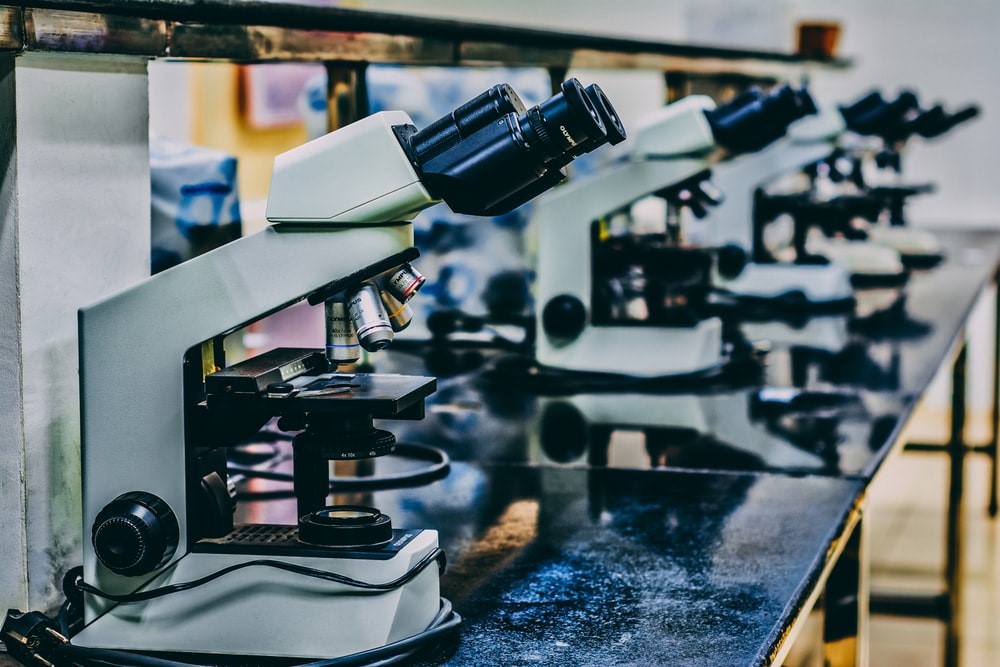This post has been contributed by Dr Robyn Blewer, lecturer in the Griffith Law School and member of the Law Futures Centre.
In June this year the Queensland government established a Commission of Inquiry into Forensic DNA Testing. This Inquiry came about largely due to the work of Dr Kirsty Wright, a highly regarded forensic biologist and DNA expert, based here in Queensland. In 2021, Dr Wright reviewed material provided to her by journalist Hedley Thomas for The Australian newspaper’s ‘Shandee’s Story’ podcast. The podcast examines the murder of Shandee Blackburn. Dr Wright contributed to this podcast by analysing the reports relating to the forensic evidence in the case. Wright’s conclusions resulted in her calling the Blackburn case ‘a forensic train wreck.’
But there was more to come. Wright suggested her findings indicated systemic problems in the Queensland Health Forensic Science Service DNA Lab that went well beyond any apparent anomalies with the Blackburn case. Quoted by ABC News, Dr Wright said:
I don’t believe other cases may have been spared these issues… and what we’re seeing with Shandee’s case may be the tip of a very large iceberg.
The DNA Inquiry Commissioner, former President of the Court of Appeal, and retired judge Mr Walter Sofronoff KC released his Interim Report on 15 September. Without pre-empting the Commissioner’s ultimate finding, the DNA Inquiry has already, indeed, uncovered a forensic train wreck that may have affected countless cases in Queensland, perhaps dating back over two decades.
The Commission of Inquiry into Forensic DNA Testing in Queensland
The DNA Inquiry terms of reference are broad. They cover
the methods, systems and processes used by the Queensland Police Service and the Forensic and Scientific Services for forensic Deoxyribonucleic Acid (DNA) collection, testing and analysis…
and whether those methods, systems and processes were reliable, conducted in accordance with best international practice, and resulted in accurate reporting of the presence of DNA in samples submitted for analysis.

Forensic science, the CSI effect and criminal justice
Thanks to shows like ‘CSI’ and the explosion in true crime podcasts, most of us understand the role DNA evidence can play in criminal prosecutions. Very few of us understand the science of DNA. Nevertheless, DNA remains an important part of prosecutions the world over. Two recent high-profile cases illustrate the reasons for this and, in turn, why the DNA Inquiry is so important for Queensland and Australia.
On 19 September, in the US, a Baltimore court overturned the conviction of Mr Adnan Syed. It was prosecutors who asked for this outcome, confessing that ‘they lack[ed] confidence in ‘integrity of the conviction.’ This was an important admission, one which prosecutors rarely make. New DNA tests contributed to this shift in thinking.
Mr Syed was convicted in 1999 of murdering his girlfriend, Hae Min Lee. They were both 17 years old at the time. For over 20 years he maintained his innocence. Mr Syed’s conviction was the topic of the first season of the ‘Serial’ podcast in 2014.
Nearly a decade on from that podcast, and over twenty years since Mr Syed’s conviction, in March this year prosecutors agreed to new post-conviction DNA testing in the case. The State made the request ‘because of advances in genetic profiling.’ There had never been any forensic evidence against Mr Syed at his initial trial, but evidence had been preserved since 1999 that allowed for new testing to be conducted using new technology in 2021. This new testing appears to have identified alternative suspects in the crime – who, incidentally, were known to police and prosecutors at the time of Mr Syed’s trial but whose existence as alternative suspects was not disclosed to the defence.
The significance of this case, for us in Queensland, is that it illustrates how important it is for evidence to be retained and preserved. It illustrates how important it is to have access to post-conviction testing that will allow advances in technology and science to be utilised. It illustrates how these things were vital for justice to be delivered, albeit over two decades too late for Mr Syed – and, tragically, not yet for Ms Lee’s family.
Closer to home, in Tasmania, Susan Neill-Fraser was released on parole on 4 October this year. Neill-Fraser was convicted in 2010 of murdering her partner, Bob Chappell. The evidence against her was entirely circumstantial. She has always maintained her innocence. DNA is an issue in this case because, as ABC News reported earlier this week:
No body or weapon was ever found and police have never been able to explain how the DNA of a then-15-year-old homeless girl came to be aboard the yacht.
Without going into the detail of the case, this girl’s DNA is relevant here because it seems that while everyone accepted the DNA was that of the girl, no one could explain how her DNA came to be on board the couple’s yacht. This case raises questions, not only about who was on the boat at the relevant time, but also about advances in DNA science that enable minute pieces of biological material to be tested for the presence of DNA. In the early days of DNA testing the question was ‘whose DNA was found at the scene?’. Now, there is a further question of ‘how did the DNA get there?’. And in these cases, questions about how prosecutors, defence representatives, judges and juries should deal with such evidence also arise.

Flaws in the Science and in the System
The cases of Adnan Syed and Sue Neill-Fraser highlight the importance of preserving evidence, acknowledging that scientific methods might change over time and of the challenges of understanding how those changes might impact on the evidence in a case. These are undoubtedly complex issues for criminal justice systems to deal with, but the integrity of criminal justice processes is of the utmost importance.
A system of justice must be committed to delivering justice at every step of an investigation and prosecution. But as several examples overseas demonstrate, there are reasons to doubt the process. In Canada the ‘Motherisk’ scandal highlighted issues with the forensic testing by the Motherisk Drug Testing Lab at the Toronto Sick Kids Hospital. Experts from the lab used hair analysis in child protection cases to support allegations of drug and alcohol abuse against parents. In her review of the matter, the Honourable Susan Lang concluded:
the hair-strand drug and alcohol testing used by the Motherisk Drug Testing Laboratory between 2005 and 2015 was inadequate and unreliable for use in child protection and criminal proceedings and … the Laboratory did not meet internationally recognized forensic standards.
Approximately 16,000 child protection cases and six criminal matters were impacted. Investigations found staff at the lab (including the director) were not qualified to undertake forensic toxicology work.
Worryingly, this wasn’t the first time an expert at this hospital was found to be unqualified to perform the work they had been doing. A 2008 inquiry revealed the work of Dr Charles Smith, the hospital’s paediatric forensic pathologist, had resulted in twelve wrongful convictions of parents and caregivers for the deaths of children. Commissioner, the Honourable Stephen T. Goudge said
[w]hen the pathology is flawed, or there is a failure of the oversight required to ensure its quality, the consequences are devastating.
This year, in May, the San Diego District Attorney’s Office abandoned an attempt to re-try Jane Dorotik for the murder of her husband twenty years earlier. Prosecutors informed the court they believed ‘the evidence is now insufficient to prove guilt beyond a reasonable doubt.’ In agreeing Dorotik’s conviction should be overturned, prosecutors referred to a range of issues with DNA evidence in the case as well as other ‘problems in the crime lab.’ Such problems included:
troubling work records of some criminalists in the San Diego County Regional Crime Lab that were never previously revealed, and allegations that the San Diego District Attorney’s office had suppressed evidence over the years … some evidence had been poorly handled, other evidence incompetently analyzed, and [allegations] there had been misconduct and incomplete investigation by law enforcement at the time.
Conclusion
Cases like Adnan Syed’s, the Motherisk cases and Jane Dorotik’s case demonstrate the ways in which flawed DNA testing can – and does – lead to wrongful convictions. Sue Neill-Fraser’s case demonstrates the complexities of the science the challenges for our courts in understanding and thus accepting or rejecting expert opinions. In his interim report, Queensland’s DNA Inquiry Commissioner, Mr Sofronoff KC, acknowledged there was still much work to be done by the Inquiry. The interim report addressed the very narrow issue of whether a particular reporting statement of the DNA Lab’s – that there was ‘DNA Insufficient for Further Processing’ – was accurate. (Mr Sofronoff KC, in fact, found that it was not and recommended that for all such reports further statements be prepared noting this erroneous description). The Inquiry will continue for the remainder of the year. How much bigger this iceberg will become it’s anyone’s guess.




Recent Comments